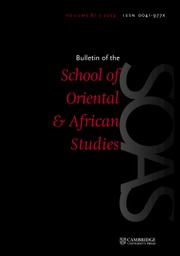Jordan is at the forefront of Islamic archaeological research, boasting an extensive published corpus beginning with the volume on the astonishing frescoed bathhouse of the Umayyad era at Qusayr ʿAmr by Alois Musil in 1907. Many excavation and survey projects in subsequent decades have added to an increasingly complex mosaic of data about its Islamic past. In recent years more studies have focused on what is here termed the Late Middle Ages, specifically the period of the Ayyubid and Mamluk sultanates. Documentary sources likewise provide many investigative avenues that are informative about southern Bilād al-Shām at this time, although the fact that Jordan formed parts of two administrative entities, the provinces of Damascus and Karak, means that accessing this material is a complex task.
The period of Mamluk rule in Jordan was accompanied by the expansion of the agricultural economy, linked by scholars to the political stability established in the later thirteenth century, and then countered by a long decline from the late fourteenth century. This view of Jordanian history is derived essentially from chronicles and other documents compiled in urban centres and outside of Jordan itself. Archaeological survey and excavation can provide an important counter-balance to this picture, revealing new data offering insights into many aspects of life at locations otherwise absent from the historical record. Archaeological data pertaining to the Mamluk era is itself problematic, as the neglect of Ottoman material culture, up until recently, has been a stumbling block in understanding the settlement history of Bilād al-Sham, leading to an over-emphasised reading of Mamluk-period occupation.
With the publication of this work Walker is to be commended for undertaking a major new synthesis of both textual and archaeological source materials for Jordan under Mamluk rule. She sets out to characterize the administrative, social and economic structure of this “Mamluk frontier”, accentuating particularly its relationship with the state apparatus in Cairo. The author has contributed a substantial body of new archival research, and directed excavations at the small fortified district capital of Ḥisbān in central Jordan. This work, combined with her survey and excavation programme in an agricultural settlement zone of northern Jordan, ideally positions her for the analysis presented here. In chapter 1 she sets out the agenda of the book, which is structured into an explicitly world systems framework, and examines the lead up to and unfolding of events of the later fourteenth century, described as a “global moment” in Jordan's history. The use of combined historiographical and archaeological approaches enables the author to develop new arguments which afford an original and nuanced perspective of this critical period.
Chapter 2 offers an in-depth examination of the administrative structures of Jordan under the Mamluks, the author taking particular care to consider the full range of its diverse geographical components while explaining how an integral relationship with the Mamluk state underwent significant changes between the thirteenth and fifteenth centuries. The region played a strong role in the economy of the sultanate and it was the location of large landholdings under the iqṭāʿ system. It was in addition a specialized producer of cane sugar and grain, while the presence of the Syrian ḥajj routes also acted as a stimulus to its rural affairs. Politically it was often linked directly to Cairo, coming to the fore in a spectacular manner with the execution of Sultan al-Nāṣr Aḥmad and the imprisonment and rescue of Sultan Barqūq at the royal castle of Karak.
Walker draws more heavily on a cross-section of archaeological and court record data in chapter 3, to present an analysis entitled “The structure and character of Jordanian society”. Here the author paints a comprehensive picture of a society where both tribal and village components were to the fore, while relations with the Mamluk state significantly influenced life in the rural milieu. A compelling argument for a “shift” in land organization and rural settlement in the final century of the Mamluk era is advanced, as opposed to accepting the thesis that socio-economic changes of the time reflect a decline. An impressive range of evidence is dealt with here, but in the author's opinion the greatest contributing factor should be attributed to changes in state land policies, leading to an increase in private land ownership and an expansion in the number of waqf endowments, and a concurrent diminution of imperial land holdings. This interpretation has been advanced by other historians of the Mamluk sultanate, but in chapter 4 the author takes the investigation in a new direction by examining sultanic endowment documents that pertain directly to Jordanian villages and landholdings, in conjunction with the analysis of the state of the economy of Jordan at the turn of the fifteenth century from historical and archaeological perspectives.
In a shorter final chapter the issue of a Mamluk “decline” is addressed from the perspective of the subsequent period of Ottoman domination. This political transition at the beginning of the sixteenth century is characterized in the Jordanian context by considerable social and administrative continuity. Walker concludes that the model of Mamluk decline should instead be viewed, on the basis of a synthetic approach to both documentary and archaeological evidence, as one of long-term social and landscape transformation.
This book is well written, comprehensively researched and thoroughly referenced, and the author sets out her original argument in a careful and measured manner. On small points of publication layout, Map 2 lacks numbers identifying the location of the sites named in the map key. Maps 4a and 4b would be richer for the inclusion of some indications which would help the reader to understand the distribution of sites in relation to the complex topographical context of Jordan. The appearance of this volume significantly advances the discussion of the social and economic implications of a critical period in Mediterranean history, drawing attention to the rich potential in investigating this dynamic province of the Mamluk and Ottoman empires.


